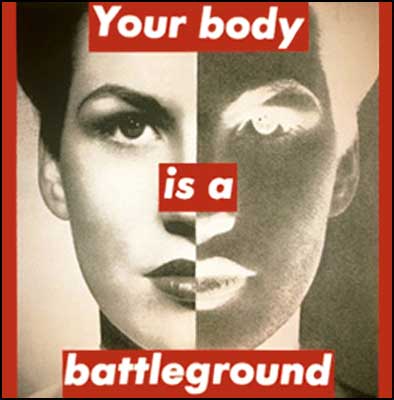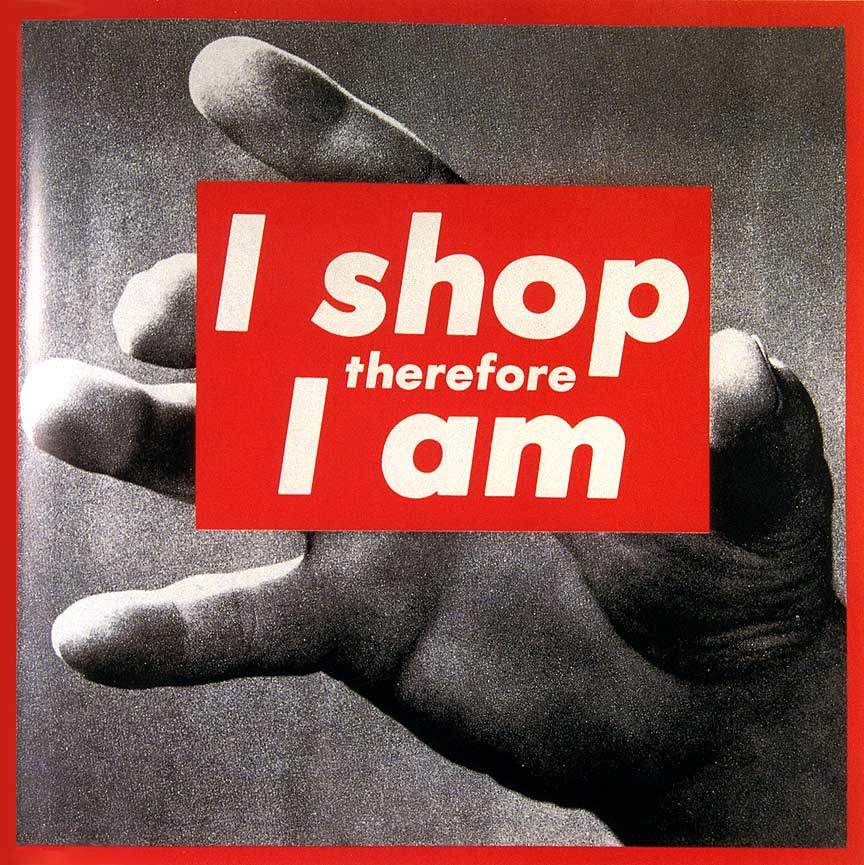
The Feminist art movement emerged in the late 1960s amidst the fervor of anti-war demonstrations as well as civil and queer rights movements. Hearkening back to the utopian ideals of early twentieth-century modernist movements, Feminist artists sought to change the world around them through their art, focusing on intervening in the established art world, the art historical canon, as well as everyday social interactions. As artist Suzanne Lacy declared, the goal of Feminist art was to "influence cultural attitudes and transform stereotypes." There is no singular medium or style that unites Feminist artists, as they often combined aspects from various movements and media, including Conceptual art, Body art, and Video art into works that presented a message about women's experience and the need for gender equality. Feminist art created opportunities and spaces that previously did not exist for women and minority artists, as well as paved the path for the identity art and activist art of the 1980s.
- Feminist artists sought to create a dialogue between the viewer and the artwork through the inclusion of women's perspective. Art was not merely an object for aesthetic admiration, but could also incite the viewer to question the social and political landscape, and through this questioning, possibly affect the world and incite change toward equality.
- Before feminism, the majority of women artists were denied exhibitions and gallery representation based on the sole fact of their gender. Feminist artists created alternative venues as well as worked to change established institutions' policies to promote women artists' visibility within the art world.
- Feminist artists often embraced alternative media, incorporating fabric, fiber, performance, and video as these materials did not have the same historically male-dominated precedent that painting and sculpture carried. By using these non-traditional media, they sought to expand the definition of fine arts to include a wider variety of media and artistic perspectives.
Important Art and Artists of Feminist Art
 Womanhouse (1972)
Womanhouse (1972)
Artist: Judy Chicago and Miriam Schapiro
Artwork description & Analysis: Womanhouse
was an installation that encompassed an entire house in residential
Hollywood organized by Judy Chicago and Miriam Schapiro as the
culmination of the Feminist Art Program (FAP) at California Institute
for the Arts in 1972. The twenty-one all-female students first renovated
the house, which had been previously marked for demolition, then
installed site-specific art environments within the interior spaces that
ranged from the sculptural figure of a woman trapped within a linen
closet to a kitchen where the walls and ceiling were covered with fried
eggs that morphed into breasts. Many of the artists also created
performances that took place within Womanhouse to further address
the relationship between women and the home. The entire collaborative
piece was about reclaiming domestic space and challenging traditional
female roles. It gave women a new realm to express their views within a
thoroughly integrated context of art and life.
Mixed media site installation
Anatomy of a Kimono (1974)
Artist: Miriam Schapiro
Artwork description & Analysis: Anatomy of a Kimono
is one of many "femmages" Schapiro created, starting in the mid-1970s,
and is based on the patterns of Japanese kimonos, fans, and robes.
Schapiro used the term femmage to describe works that combined collage,
painting, fabric, embroidery and other "high art" and "decorative art"
techniques, simultaneously highlighting women's relation to those
materials and processes. The artist collected donated handkerchiefs
while touring the country and cobbled them together with other fabrics
to form ten large panels filled with Japanese-inspired shapes. The work
adopts the monumental scale of Abstract Expressionist canvases, but by
using fabric instead of paint, Schapiro elevates a utilitarian and
feminine material to the realm of "high art."
Semiotics of the Kitchen (1975)
Artist: Martha Rosler
Artwork description & Analysis: Now one of the canonical works of feminist video art, Semiotics of the Kitchen
examines women's relationship to the home through the trope of the
televised cooking show. Rosler describes the video stating, "an
anti-Julia Child replaces the domesticated 'meaning' of tools with a
lexicon of rage and frustration." Rosler parodically adopted the role of
the "host," and runs through an alphabetical index of kitchen utensils,
illustrating their use and action with pantomime. The woman and her
implements disrupt the familiar system of everyday meanings - the safely
understood signs of food production erupt into anger and violence. In
list of kitchen implements, states Rosler, "when the woman speaks, she
names her own oppression." She, like many feminist artists of the 1970s,
wished to interrupt and change the preconceived notions about women's
roles within the home, and how these were represented in the mass media.
Black and white video with sound - Electronic Arts Intermix
The Dinner Party (1974-1979)
Artist: Judy Chicago
Artwork description & Analysis: The Dinner Party
is one of the most well-known pieces of Feminist art in existence and
is permanently housed at the Center for Feminist Art at the Brooklyn
Museum. The installation consists of a large banquet table with place
settings for thirty-nine notable women from history and mythology. The
settings have gold ceramic chalices and porcelain plates painted with
butterfly- and vulva-inspired designs. In addition to the thirty-nine
settings, there are the names of 999 other women painted on the tiles
below the triangular table. The Dinner Party participates in the
feminist revision of history, initiated during the 1970s, in which
feminists worked to re-discover lost role models for women, re-writing
the past that had previously only included male voices. In the
combination of intricately wrought textiles, tile, and porcelain,
Chicago reclaimed the realm of "high art" to include what had
traditionally been relegated to the lower status of "women's work."
Painted porcelain plates, silverware, chalices, fabric, tiles - Brooklyn Museum
Untitled (I shop therefore I am) (1987)
Artist:
 Artwork description & Analysis: This
piece is characteristic of Kruger's early work, depicting a phrase
placed over a photographic image from a newspaper or magazine. Kruger
first worked in magazine advertising, and used her graphic design
expertise in her art. The slogan in this work refers to images of women
in the media, specifically product advertisements designed for women,
which are usually created by men. It is a reminder that most of the
media that is geared toward women is based on men's assumptions about
women's desires, lives, and ideals, interrogating the belief that women
only need material objects to feel happy and that men can keep them
under their control by those means. Kruger's work is accessible and
direct, and was incredibly influential among the artists of the 1980s.
Artwork description & Analysis: This
piece is characteristic of Kruger's early work, depicting a phrase
placed over a photographic image from a newspaper or magazine. Kruger
first worked in magazine advertising, and used her graphic design
expertise in her art. The slogan in this work refers to images of women
in the media, specifically product advertisements designed for women,
which are usually created by men. It is a reminder that most of the
media that is geared toward women is based on men's assumptions about
women's desires, lives, and ideals, interrogating the belief that women
only need material objects to feel happy and that men can keep them
under their control by those means. Kruger's work is accessible and
direct, and was incredibly influential among the artists of the 1980s.
Photographic Silkscreen/Vinyl

No comments:
Post a Comment